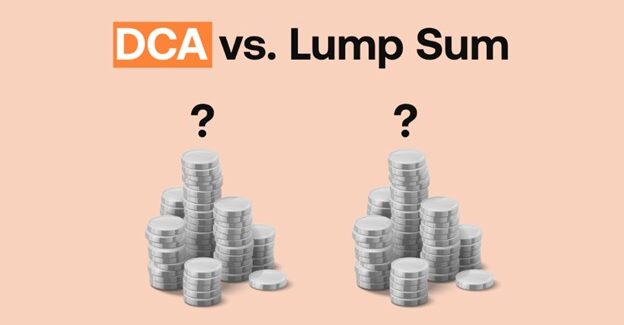The cryptocurrency industry has experienced explosive growth in recent years. However, many people still struggle to understand the jargon associated with it. The world of crypto is complex and requires a steep learning curve as it combines game theory, cryptography, mathematics, and economics all within its category.
It’s crucial to understand the difference between altcoins and stablecoins, as the two terms are often misunderstood. Mistaking one for the other can have significant consequences for investors. This discussion will dive into the key differences between these two terms, providing clarity and insight.
What are Altcoins?
Altcoin is a term used to refer to all coins that are not Bitcoin, the first cryptocurrency. The name originated during the early stages when Bitcoin was the most dominant coin in the market. Due to Bitcoin’s overwhelming dominance, all other competing coins were defined in relation to it.
Currently, the crypto market boasts over 20,000 altcoins in circulation and the number is growing daily. Most altcoins are designed to improve specific aspects of existing blockchains or cryptocurrencies, while others serve a specific purpose, as created by the developers. According to CoinMarketCap, there is a diverse range of altcoins to choose from, each with unique features and benefits.
How Do Altcoins Work?
Altcoins are designed for various purposes, resulting in their unique functionalities. Some altcoins validate transactions and pay for transaction fees, while others connect multiple blockchains or scale current cryptocurrency networks.
Even with the diverse use cases, many altcoins operate within the ecosystem of one of the dominant Layer 1 blockchain networks in the industry, such as Ethereum. Ethereum alone accounts for over 50% of the total value locked (TVL) in the industry.
Layer 1 blockchains such as Ethereum or Binance Smart Chain refer to the base network of a blockchain-based system. These networks are the foundation for the development of various altcoins and can finalize transactions independently, without relying on another network.
Types of Altcoins
Various types of altcoins exist within the cryptocurrency market, apart from stablecoins, which are classified as a type of altcoin. Tokens and cryptocurrencies are other examples of altcoin types.
Tokens and cryptocurrencies are commonly used interchangeably but are not the same. Cryptocurrencies are native assets of a blockchain, such as BTC or ETH. However, tokens are created as part of a platform built on an existing blockchain.
Unlike cryptocurrencies, tokens’ behavior is not inherent within the blockchain. Instead, their behavior comes from the implementation of smart contracts. These smart contracts are pieces of code stored within the blockchain, enabling automatic execution of certain functions when predetermined conditions are met. Tokens come in different types, including utility, governance, and security tokens.
Ethereum
Ethereum (ETH) is the leading altcoin in the cryptocurrency market in terms of market capitalization, surpassing other altcoins, such as Tether, USD Coin, and BNB.
In the cryptocurrency industry, Ethereum, along with Bitcoin, is at the forefront of the movement. However, unlike Bitcoin, Ethereum is known as a second-generation blockchain, setting the stage for future advancements.
Second-generation blockchains have more capabilities and offer greater programmability. Ethereum is like a publicly shared global computer network that enables developers to create applications across a decentralized server instead of relying on a centralized network.
Litecoin
Litecoin (LTC) is a well-known altcoin by institutions and was created from a fork in the Bitcoin blockchain. Although it has a different algorithm, Litecoin shares similar features with the Bitcoin blockchain.
The original goal of Litecoin was to prevent enterprise-sized miners from acquiring too much control over the mining process. However, this mission failed as miners quickly adapted their mining machines to increase their mining capacity. Consequently, despite its faster transaction speeds compared to Bitcoin, many consider Litecoin to be an outdated blockchain.
Stellar Lumens
Stellar Lumens is an altcoin designed to connect individuals to banks worldwide, aimed at improving financial inclusion by establishing cost-efficient, accessible, and user-friendly global payment systems.
The native token of the Stellar Lumens network is XLM. Although not as popular as some other altcoins, such as Ethereum or Polygon, Stellar Lumens has been one of the best-performing altcoins over the past five years.
What are Stablecoins?
Stablecoins are digital currencies designed to reduce the inherent volatility of cryptocurrencies by tying their value to a stable asset, typically the U.S. dollar. These coins are widely used to facilitate easy and secure cryptocurrency trading and are increasingly being used for remittances, settlements, and payments within decentralized applications.
How do Stablecoins Work?
There are three types of stablecoins available – fiat-collateralized, crypto-collateralized, and algorithmic stablecoins – each functioning slightly differently.
Fiat-collateralized stablecoins maintain a reserve of fiat currency (or currencies), such as the U.S. dollar, to ensure the stablecoin’s value, typically at a 1:1 ratio. On the other hand, crypto-collateralized stablecoins maintain a reserve of cryptocurrencies to ensure their value, often overcollateralized due to the volatility of crypto assets.
Algorithmic stablecoins rely on algorithms to manipulate the circulating supply and incentivize market participant behavior. Theoretically, this should stabilize any given coin price around the peg. However, algorithmic stablecoins are the riskiest of stablecoins and often fail, as demonstrated by the collapse of TerraUSD (UST).
Types of Stablecoins
Multiple stablecoins are used in the crypto space, but not all are equal. Here are a few of the popular stablecoins and how they work:
USD Coin
USD Coin, also known as USDC, is a top fiat-collateralized stablecoin. It was created by Circle in 2018 and is pegged at a 1:1 ratio to the U.S. dollar. Unlike USDT, USDC holds a greater proportion of its reserves in cash and cash equivalents. Currently, USDC is the second-largest stablecoin based on market capitalization.
Binance USD
Similar to USDC, Binance USD (BUSD) is also a fiat-collateralized stablecoin, pegged to the U.S. dollar. Paxos and Binance founded BUSD, making it widely used across various trading pairs on the Binance exchange.
Tether
Tether (USDT) is a fiat-collateralized stablecoin and the world’s most commonly used stablecoin. It’s primarily used on Ethereum and Bitcoin blockchains. Despite its popularity Tether has been in the limelight for many controversies surrounding its failure to provide audited financial statements that prove adequate reserves backing USDT.
Advantages and Disadvantages of Altcoins
Altcoins have a unique set of advantages and disadvantages when compared to Bitcoin. Altcoins offer both increased reward and risk potential for investors. By diversifying and conducting thorough research, investors can optimize the returns of their portfolio, such as a crypto individual retirement account (IRA). Here are some key benefits and drawbacks to consider:
Benefits of Altcoins
- Higher Growth Potential: Altcoins have more room for growth than Bitcoin due to their relatively smaller market caps and lower levels of institutional adoption.
- Competitive Advantage: Most altcoins aim to improve upon existing cryptocurrencies and offer a unique set of benefits and utilities.
Drawbacks of Altcoins
- High Risk: Cryptocurrency is already a high-risk asset class, and altcoins can exacerbate this risk, given that many of them fail in the long run.
- Difficult to Purchase: Some obscure altcoins are challenging to buy since they are only available on specific exchanges and platforms.
Advantages and Disadvantages of Stablecoins
While the price stability of stablecoins provides multiple advantages for investors, there are some important drawbacks. Here are some benefits and limitations of stablecoins:
Benefits of Stablecoins
- Low Volatility: Stablecoins are typically pegged to a fiat currency or commodity, resulting in little to no volatility. This allows for smooth and efficient trading.
- Hedge Against Failing Markets: Stablecoins serve as safe havens during cryptocurrency bear markets, enabling traders to quickly liquidate their digital assets and re-enter the market when sentiment improves.
Drawbacks of Stablecoins
- Centralization: The most popular stablecoins, such as USDC and USDT, are centralized, which conflicts with the fundamental ethos of cryptocurrency, namely decentralization. This presents several risks, including counterparty risk for investors.
- Limited Growth: Stablecoins are typically linked to stable and nonvolatile assets, which means they do not offer the same potential for price appreciation as other altcoins.
Altcoins vs. Stablecoins
Despite their differences, altcoins and stablecoins also have a few similarities.
Similarities Between Altcoins and Stablecoins
- Coins: Stablecoins and altcoins both fall under the umbrella of digital coins.
- Crypto Wallets: Both stablecoins and altcoins are stored in different types of crypto wallets.
Differences Between Altcoins and Stablecoins
- Volatility: The value of altcoins may fluctuate greatly, while stablecoins are designed to maintain a stable value.
- Centralization: The most significant cryptocurrencies, such as Bitcoin and Ethereum, are highly decentralized, while the largest stablecoins, such as USDC and USDT, are highly centralized.
Altcoins vs. Stablecoins Explained
In summary, although many people may confuse the two terms, altcoins and stablecoins are significantly different types of coins. Altcoins, in general, are all cryptocurrencies except for Bitcoin, whereas stablecoins are a specific type of altcoin that pegs its value to a stable asset, such as a fiat currency or commodity.









 3,500+ 5-Star Reviews
3,500+ 5-Star Reviews